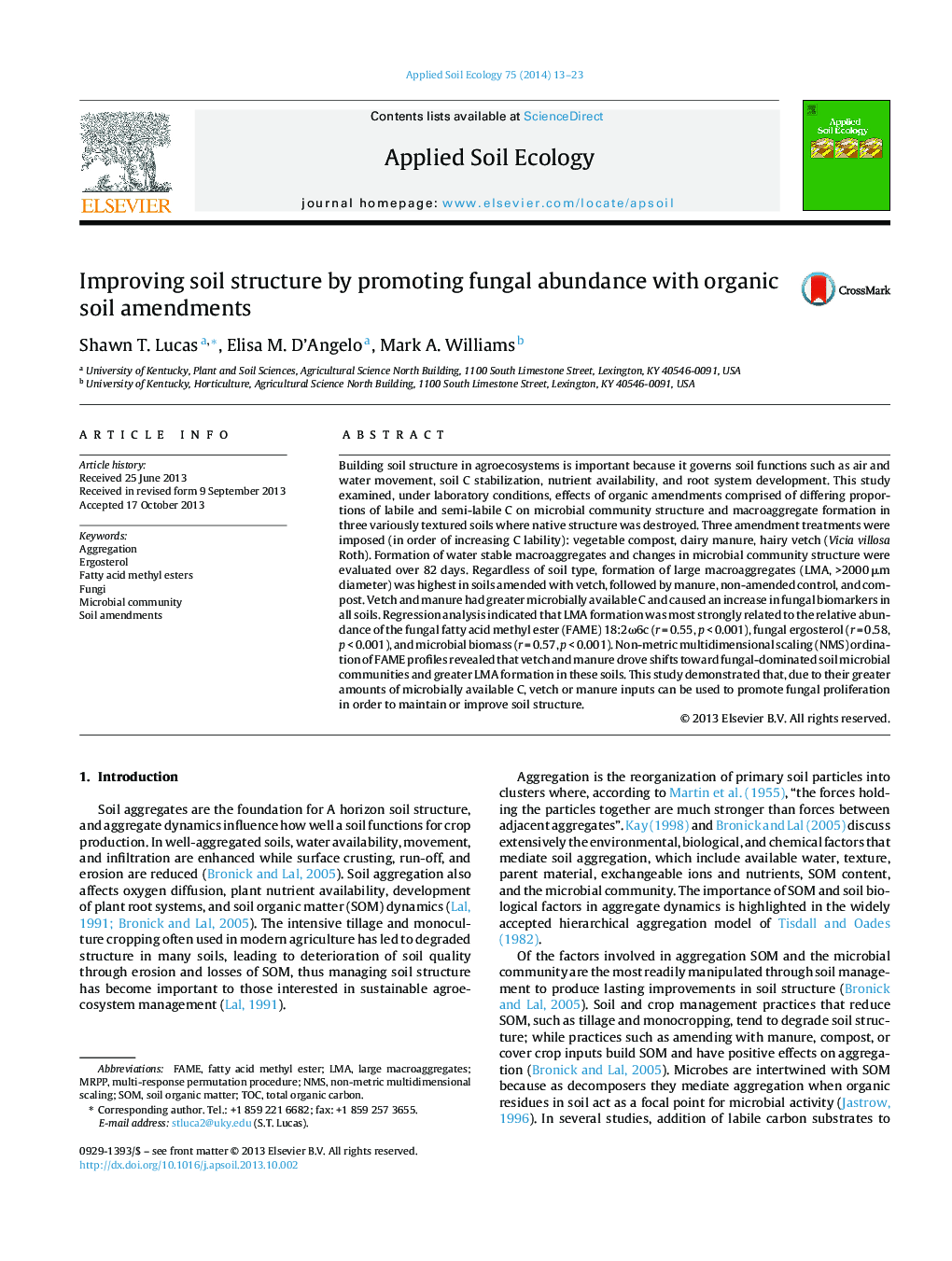| Article ID | Journal | Published Year | Pages | File Type |
|---|---|---|---|---|
| 4382275 | Applied Soil Ecology | 2014 | 11 Pages |
Abstract
Building soil structure in agroecosystems is important because it governs soil functions such as air and water movement, soil C stabilization, nutrient availability, and root system development. This study examined, under laboratory conditions, effects of organic amendments comprised of differing proportions of labile and semi-labile C on microbial community structure and macroaggregate formation in three variously textured soils where native structure was destroyed. Three amendment treatments were imposed (in order of increasing C lability): vegetable compost, dairy manure, hairy vetch (Vicia villosa Roth). Formation of water stable macroaggregates and changes in microbial community structure were evaluated over 82 days. Regardless of soil type, formation of large macroaggregates (LMA, >2000 μm diameter) was highest in soils amended with vetch, followed by manure, non-amended control, and compost. Vetch and manure had greater microbially available C and caused an increase in fungal biomarkers in all soils. Regression analysis indicated that LMA formation was most strongly related to the relative abundance of the fungal fatty acid methyl ester (FAME) 18:2Ï6c (r = 0.55, p < 0.001), fungal ergosterol (r = 0.58, p < 0.001), and microbial biomass (r = 0.57, p < 0.001). Non-metric multidimensional scaling (NMS) ordination of FAME profiles revealed that vetch and manure drove shifts toward fungal-dominated soil microbial communities and greater LMA formation in these soils. This study demonstrated that, due to their greater amounts of microbially available C, vetch or manure inputs can be used to promote fungal proliferation in order to maintain or improve soil structure.
Keywords
Related Topics
Life Sciences
Agricultural and Biological Sciences
Ecology, Evolution, Behavior and Systematics
Authors
Shawn T. Lucas, Elisa M. D'Angelo, Mark A. Williams,
